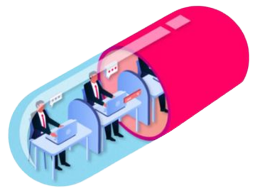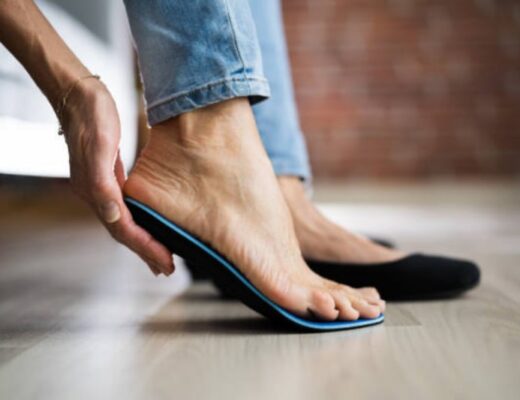Lower urinary tract symptoms (LUTS) are a term that refers to a group of clinical symptoms that affect the bladder, urinary sphincter, urethra, and, in men, the prostate. While LUTS is the preferred term for prostatism and is more frequently associated with men, lower urinary tract symptoms affect women as well. Lower urinary tract symptoms (LUTS) are becoming more prevalent in men and women as they age.
Symptoms
When it comes to men’s bladder issues, lower urinary tract symptoms (LUTS) encompass an assortment of issues. The term “LUTS” may be used by your doctor if you have:
- Inconsistent or infrequent urination.
- Urge to urinate without warning.
- Need to pee frequently during the night.
- Persistent urination problems.
- You may have the feeling that your bladder is full.
BPH-related lower urinary tract symptoms (LUTS) and sexual dysfunction such as erectile dysfunction (ED) are common in men over the age of 50. In addition to impairing sexual function, LUTS and erectile dysfunction can also harm one’s overall well-being when they coexist. Your doctor can assist you in determining the underlying cause of your LUTS and the best course of treatment for you.
Causes
- Benign prostatic hyperplasia (BPH):
BPH, also known as prostate enlargement, is a noncancerous increase in the size of the prostate gland that is not cancerous. Frequent urination, difficulty starting to urinate, weak stream or inability to urinate are all possible symptoms. Bladder stones, infections, and chronic kidney disease are possible side effects.
- Bladder stone:
In the bladder, mineral deposits known as bladder stones can form. Bladder stones are most commonly formed when urine is too concentrated or when a person is dehydrated. Stones in the urinary bladder may not cause any symptoms, but they can still be found on a routine radiograph. These include severe lower abdominal and back pain, difficulty urinating (especially at night), frequent urination, fever, painful urination, and blood in the urine when these symptoms do occur.
- Cancer of the bladder :
Bladder cancer can be any of several different types of cancer that originate in the bladder’s tissues. Blood in the urine, pain while urinating, and low back pain are some of the symptoms. When the bladder’s epithelial cells become malignant, it results in bladder cancer.
- Cancer of the prostate
There are many types of prostate cancer, but the vast majority of them are slow-growing and do not pose a significant threat to the patient. While some forms of prostate cancer grow slowly and may require little or no treatment, others are aggressive and can spread quickly.
There may be no symptoms in the early stages of prostate cancer.
However, advanced prostate cancer symptoms include the following:
- Having difficulty passing urine
- Urine flow is less forceful.
- Urine with a small amount of blood.
- Semen containing blood
- A throbbing in the bones
- Shedding pounds without exerting any effort
- Male infertility
- Detrusor muscle weakness and instability:
There are many different names for the detrusor muscle, including muscularis propria of the urinary bladder and (to a lesser extent) muscularis propria. Allowing the bladder to store urine, the detrusor muscle relaxes during the urination process. Sphincter muscles, which surround the urethra and contract to control the flow of urine, are also related.
6.Cauda equina syndromes:
Damage to the bundle of nerves below the end of the spinal cord known as the cauda equina (CES) can lead to symptoms such as tingling, weakness, and pain. Low back pain, leg pain, numbness around the anus, and incontinence are just a few of the warning signs and symptoms. The onset can be fast or slow.
Disc herniation in the lower back is the most common cause. In addition to these, spinal stenosis and cancer are two other causes.
- Urethral stricture:
Injury, instrumentation, infection, and some non-infectious forms of urethritis all contribute to urethral stricture.
Weak urine flow is a telltale sign of urethral stricture. Other signs and symptoms:
- Urinary stream splatter
- Frequency of urination
- Urinary compulsion
- Urinary incontinence
- Urethral spasms
- Infection of the urinary system
- Prostatitis
Severe urethral strictures can leave some patients unable to urinate at all. Acute urinary retention is a medical emergency and requires immediate attention.
- Urinary tract infections (UTIs):
When an infection spreads to the urinary tract, it is referred to as a urinary tract infection (UTI). A bladder infection (cystitis) occurs when the lower urinary tract is infected, while a kidney infection occurs when the upper urinary tract is infected (pyelonephritis). Pain in the lower urinary tract, frequent urination, and the feeling of needing to urinate despite having an empty bladder are all symptoms of a lower urinary tract infection (LUTI). Additional symptoms of a kidney infection include fever and pain in the lower abdomen. In rare cases, blood may be seen in the urine. Patients who are very old or very young may have symptoms that are vague or non-specific.
Diagnosis
- Urine Test
If you’re experiencing LUTS, your doctor may take a urine sample to look for signs of infection, bladder stones, or other possible causes.
- Reproductive Endocrinology Examination
Your urologist will insert a gloved, lubricated finger into the rectum to check for prostate enlargement during this exam. LUTS can be caused by an enlarged prostate.
- Ultrasound
Noninvasive ultrasounds may be used by your doctor to check the bladder and prostate.
- Prostate-Specific Antigen Test
Your doctor will collect a blood sample for a PSA test. A specific antigen (immune cell) may indicate prostate cancer in this blood, which is why it is being tested.
- Cystoscopy
To check for blockages or other issues, your doctor will insert a thin, flexible tube with a camera on the end into your urethra and your bladder.
Treatment
If a cause is found, treatment will be personalized to the patient’s needs. Antibiotics, for example, would be prescribed in the case of a UTI.
- Lifestyle changes
You can take precautions by avoiding dehydration in the case of recurrent cystitis, which can also be helpful.
You may need to lose weight, lower your blood pressure, quit smoking, or change your drinking habits to manage your LUTS symptoms. For example, you may need to refrain from drinking any liquids for several hours before you go to bed to avoid disrupting your sleep cycle.
- Medicines
A common symptom of LUTS is a urinary tract infection, which can be treated with medications like antibiotics. You can get your prescribed medications or ed medications online. Your LUTS can be treated in various ways depending on the underlying cause, including by relaxing, constricting, or shrinking just your prostate altogether. Surgical techniques to remove the entire prostate have been developed if medical treatment fails or is not an option.
- Surgical Treatment
Surgical options for treating LUTS include:
- Prostate and urethra stents are surgically implanted.
- The prostate is removed through the urethra (TURP)
- Thermotherapy using transurethral microwaves
- A common treatment for urethral strictures is urethral dilatation.
- Ablation procedures – are used to treat both bladder tumors and obstructions of the bladder outlet, such as those caused by prostate conditions
- Bladder-neck resection (BNI)
- Open, robotic, and endoscopic techniques are employed in the removal of the prostate.
- Exercising your body
Urinary tract symptoms can be alleviated by engaging in regular physical activity. The efficiency of physical activity as a cure for men with urinary symptoms caused by benign prostatic hyperplasia is still uncertain.
Check Out Our Blog: The Benefits Of Flossing And Important




